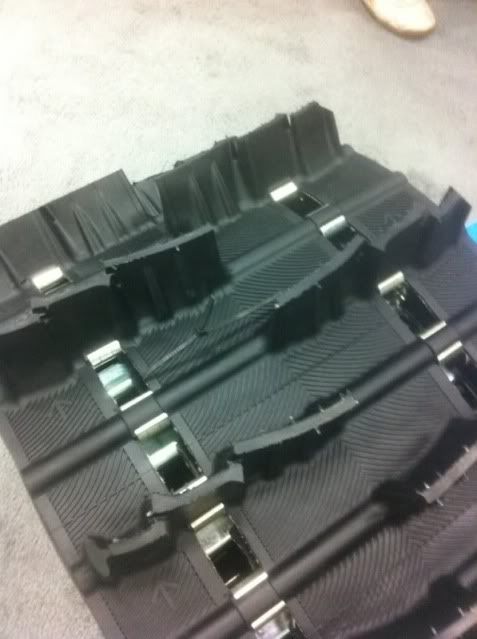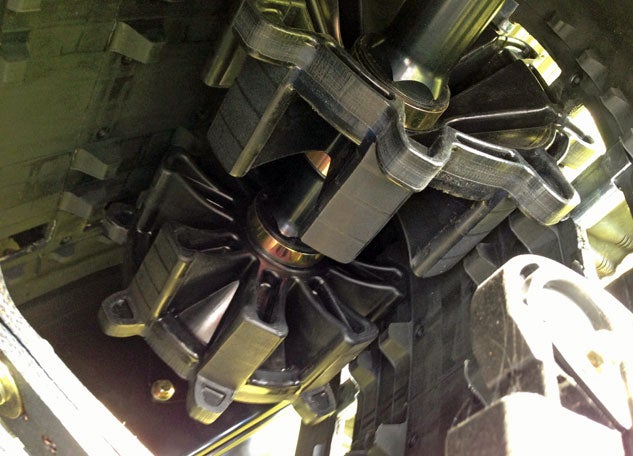nebdirtturner
Automotive
- Oct 5, 2014
- 7
I am designing a drive system using snowmobile tracks as drive components. The issue I have is that I need drive sprockets that are larger than currently manufactured. Let me give you some specifics on the components I am utilizing.
The snowmobile tracks have a 2.52" pitch with 1.5" square windows for the sprocket teeth to engage. The rollers on snowmobile tracks are not round they are elliptical they are 0.5" thick and 1.0" long.
The only limiting factors of the sprockets are that the bottom diameter must be at least 12" for clearance of the drive lugs on the inside of the tracks.
I have laid out a sprocket already and had a sample one cut to see if it works. If the track is laid out flat it engages all the windows appropriately and works correctly. However the sprockets will have the track wrapped around them 180 degrees (think bulldozer drive sprocket arrangement). When I wrap the track around the sprocket it fails to engage correctly and after about 90 degrees of motion the track rides up the tooth and jumps.
I originally thought this would be an easy part of my design but now I am second guessing myself. I do not if my angles are incorrect or the issue lies in the fact that a snowmobile track is not rigid like the link design of chain and therefore going around in a circle the pitch actually gets smaller than 2.52" because of this "bend in the link". I do know that snowmobile manufacturers use drive sprockets for tracks I would gladly purchase the sprockets from them but they are way too small in diameter for what I need.
Any help would be appreciated!
The snowmobile tracks have a 2.52" pitch with 1.5" square windows for the sprocket teeth to engage. The rollers on snowmobile tracks are not round they are elliptical they are 0.5" thick and 1.0" long.
The only limiting factors of the sprockets are that the bottom diameter must be at least 12" for clearance of the drive lugs on the inside of the tracks.
I have laid out a sprocket already and had a sample one cut to see if it works. If the track is laid out flat it engages all the windows appropriately and works correctly. However the sprockets will have the track wrapped around them 180 degrees (think bulldozer drive sprocket arrangement). When I wrap the track around the sprocket it fails to engage correctly and after about 90 degrees of motion the track rides up the tooth and jumps.
I originally thought this would be an easy part of my design but now I am second guessing myself. I do not if my angles are incorrect or the issue lies in the fact that a snowmobile track is not rigid like the link design of chain and therefore going around in a circle the pitch actually gets smaller than 2.52" because of this "bend in the link". I do know that snowmobile manufacturers use drive sprockets for tracks I would gladly purchase the sprockets from them but they are way too small in diameter for what I need.
Any help would be appreciated!


